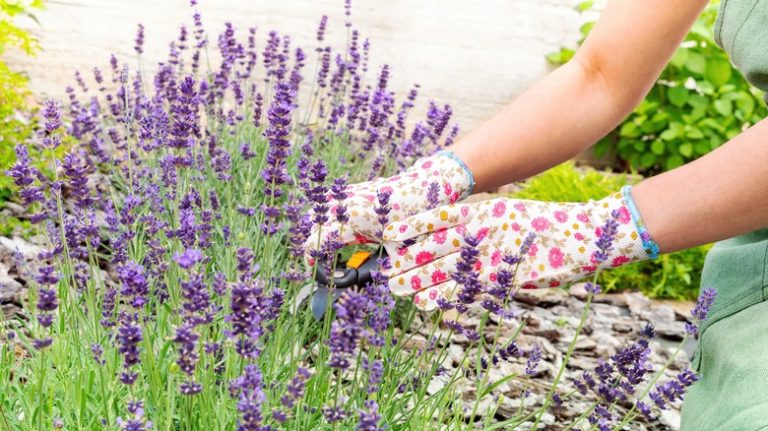The Wood Anemone, scientifically known as Anemone quinquefolia or Anemone anemonoides, is a truly enchanting wildflower that is often found in wooded areas. This delicate plant, which typically blooms in the spring, can be found in a variety of colors ranging from white and lilac to fully colored flowers. It is a favorite among gardening enthusiasts, and is often planted in parks and gardens to bring a touch of natural beauty.
The Wood Anemone is a disease-resistant plant that thrives in well-drained soils. It prefers shady areas, and can often be found growing under the canopy of trees. While it can tolerate some sunlight, caution should be exercised as too much direct sunlight can cause the plant to wilt. This wildflower is typically found in woods and waterlogged areas, and is known for its ability to thrive even when covered by snow.
Wood Anemone has a variety of uses, both in landscaping and horticultural practices. Its delicate blooms make it a popular choice for cut flower arrangements, while its detailed flowering patterns and vibrant colors make it a standout in any garden. This plant is also a favorite among pollinators, attracting bees, butterflies, and other beneficial insects.
The Wood Anemone is native to Europe, but it is also found in parts of North America, including Ireland and the Afton Park in Ontario. It is a hardy plant that can withstand cold winters and is often one of the first wildflowers to bloom in the spring. Once established, it can easily spread through its underground roots, quickly filling in an area with its beautiful blooms.
It is worth noting that the Wood Anemone is sometimes mistakenly referred to as a woodland orchid, but it is not related to the orchid family. It is, however, part of the buttercup family, which includes other wildflowers such as the Hepatica and the Buttercup. So please keep in mind that although the Wood Anemone may resemble an orchid, it is not one.
Overall, the Wood Anemone is a beautiful and versatile wildflower that adds a touch of elegance to any garden or natural space. Its delicate blooms and vibrant colors make it a standout among other wildflowers, and its ability to thrive even in shady areas and waterlogged soils makes it a popular choice for gardeners and enthusiasts alike.
Gardening 101 Wood Anemones
Wood Anemone is a variety of flowering plants that belongs to the buttercup family. It is a welcome addition to any garden due to its beautiful flowers and lush foliage. The plant usually matures to a height of around 6-8 inches.
Wood Anemones can be found in a variety of habitats, from woodlands to meadows. They are native to Europe and Asia but have been successfully introduced to horticultural cultivation in many other regions, including North America. Wood Anemones prefer shady areas with moist, well-drained soil. They can survive even in dry or rocky soil, but they typically thrive in more fertile conditions.
The leaves of Wood Anemones are deeply lobed and available in different shades, ranging from hennepin lilac to pale pinkish-green. These lobed leaves add a unique touch to any garden and make the plant stand out.
Propagation of Wood Anemones can be done through seeds or division of mature plants. It’s best to collect the seeds after they have ripened and allow them to naturally disperse. When established, Wood Anemones will form dense colonies, which make them an ideal choice for natural landscaping or wildflower displays.
Wood Anemones are generally resistant to pests and diseases. However, they may attract slugs, so it’s important to keep an eye out for these garden intruders. A detailed planting and care guide can help gardeners keep their Wood Anemones healthy and thriving.
Wood Anemones bloom in early spring, usually in March, and continue to flower throughout the springtime. The flowers are white and delicate, with six petals and a yellow center. The plant displays its fresh, spring-like beauty even before the foliage fully emerges.
The foliage of Wood Anemones is also attractive, with deeply lobed leaves that add a touch of green to the garden. The leaves are alternate and have a vestal appearance, making them a popular choice for flower arrangements and other ornamental purposes.
In conclusion, Wood Anemones are a beautiful addition to any garden. Whether you are a seasoned gardener or just starting out, these native flowers are sure to bring joy and beauty to your outdoor space. With their natural beauty, easy cultivation, and resistance to pests and diseases, Wood Anemones are a great choice for any landscaping project.
Wood Anemone A nemorosa “Gladed Windflower”
The Wood Anemone (Anemone nemorosa) also known as the “Gladed Windflower”, blooms in the spring and can be found in wooded areas. They grow best in dark and shady parts of the ground where they thrive. If planted in March, the Wood Anemone will last until May and can be picked for fresh spring flowers.
You’ll notice how the Wood Anemone prefers rich, well-drained soil and can tolerate a wide range of pH levels. Besides blooming, they have fine foliar segments that add to their beauty. Anemones are considered ephemerals but can be a nice addition to any garden, especially if you’re looking for early spring flowers.
In terms of cultivation, Wood Anemones can be grown from seeds or tubers. When growing from seeds, it’s important to note that they have a low germination rate and often require stratification. This means that they need a period of cold dormancy in order to sprout. Wood Anemones prefer moist soil and will benefit from regular watering, especially during dry periods.
Wood Anemones are generally disease and pest-free, although they may be susceptible to powdery mildew. To keep the plants healthy, it’s best to provide adequate sunlight and to avoid overcrowding. If you’re planting them in areas with heavy shade, make sure they receive some filtered sunlight.
In summary, the Wood Anemone (Anemone nemorosa) is a beautiful flowering plant that thrives in the dark and shady parts of the ground. It can be grown from seeds or tubers, but requires specific conditions for germination. Besides its lovely blooms, it has fine foliar segments that add to its charm. Wood Anemones are generally disease and pest-free, but may be susceptible to powdery mildew. To keep them healthy, provide adequate sunlight and avoid overcrowding.
Please note that this is a brief overview and for more detailed information on the cultivation of Wood Anemones, it’s best to consult gardening nurseries or refer to specialized resources.
Cheat Sheet
In landscaping, the Wood Anemone, also known as Anemonoides nemorosa, is a native wildflower that can help to add color and texture to your garden. This plant has attractive foliage that forms a thick canopy once it is fully established. Typically, Wood Anemones prefer to grow under the canopy of larger plants or trees, where they are protected from direct sunlight. They are often found in wooded areas or other shady spots.
The Wood Anemone produces beautiful pink or white flowers that bloom in the spring. These flowers have four to five petals and are usually about one inch in diameter. The foliage of the Wood Anemone is also quite attractive, with lobed and toothed leaves that grow from the base of the plant.
When it comes to propagation, Wood Anemones can be grown from divisions, cuttings, or seeds. They can also be purchased from nurseries or obtained through horticultural organizations or restoration projects. It’s important to keep in mind that Wood Anemones prefer well-drained soils and typically do best in moist, humus-rich conditions. They can tolerate a range of soil pH levels but prefer slightly acidic conditions.
Wood Anemones do not have any specific pest or disease issues, making them relatively low maintenance in the landscape. However, they may benefit from a layer of mulch around the base of the plants to help retain moisture and suppress weed growth. In colder winter climates, it’s a good idea to cut back the spent foliage in the fall to help protect the plants from winter damage.
If you’re looking to add a touch of color and beauty to your garden, don’t miss out on the charm of Wood Anemone. Whether you plant them under the canopy of larger plants or in a shaded area of your garden, these native wildflowers are sure to bring life to your landscape.
Table: Some Tips for Growing Wood Anemone
| Planting | Plant Wood Anemones in spring or fall. |
| Location | Choose a shady spot with well-drained soil. |
| Watering | Keep the soil consistently moist, but not waterlogged. |
| Sunlight | Wood Anemones prefer partial shade. |
| Divisions | Divide clumps in early spring or late summer. |
| Mulching | Apply a layer of mulch around the base of the plants to retain moisture and suppress weeds. |
| Fertilizing | Wood Anemones typically do not require fertilizer, but a light application of balanced fertilizer in early spring may be beneficial. |
| Winter Care | In colder climates, cut back the foliage in the fall to protect the plants from winter damage. |
Keep It Alive
Wood anemones, also known as windflowers, are delicate and beautiful spring wildflowers that can add a touch of color to any landscape. These flowers, scientifically named Anemone nemorosa and Anemonoides nemorosa, are mainly found in Europe but also grow in other parts of the world, including North America.
Wood anemones are low-growing plants that prefer partial shade, making it perfect for planting in wooded areas or shady borders. They can tolerate a variety of soils but thrive in well-drained, humus-rich soils. Their flowers come in various colors such as white, pink, lilac, and purplish, truly adding a pop of color to the landscape.
If you want to keep wood anemones alive and blooming, here are some tips to guide you:
1. Planting:
Wood anemones can be planted in the fall or winter using tubers or bulbs. Make sure to dig a hole deep enough to cover the roots, about 1-2 inches deep. Keep in mind that wood anemones are more suited for cooler climates and are not recommended for regions with hot summers.
2. Sunlight and water:
Wood anemones prefer partial shade and are adapted to woodland environments, so make sure to find a spot that provides some shade during the day. They require regular watering, especially during times of drought.
3. Pruning and managing pests:
Wood anemones generally don’t require much pruning. Simply remove any damaged or dead stems after blooming to keep the plant healthy. As for pests, wood anemones are usually not bothered by them.
4. Winter care:
Wood anemones are winter-hardy plants, but it’s still important to protect them during extreme cold temperatures. Apply a layer of mulch around the plants to provide insulation and help them survive the winter.
By following these tips, you can ensure that your wood anemones flourish and continue to bring beauty to your landscape. These delicate flowers are truly a welcome sight in any garden, and with proper care, they can thrive for years to come.
Sources:
Peter Wyatt’s “Woodland Flowers”
“The Mississippi Gardener’s Guide” by Felder Rushing and Walter Reeves
Garden Guides: “Wood Anemone Care”


